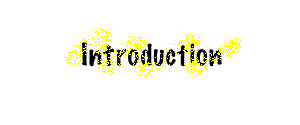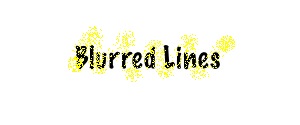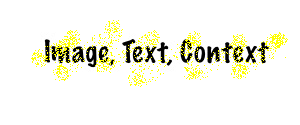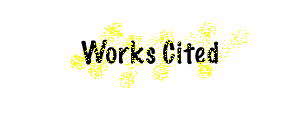Musical Performance, Audience, and Class Relations: The Yellow Book Blurs the Lines
Roxanne Frazer
Ryerson University
2564
Prospectus: The Yellow Book 2 (July 1894)
Aubrey Beardsley
|
The Yellow
Book was a periodical in the 1890’s that is described as "a
product of its experimental, provocative moment in time" (Turner). It had an innovative form, sexually suggestive
drawings, courtesy of Aubrey Beardsley, and was unconventional in many ways
compared to the average quarterly periodical in the 1890's. The publication can be seen as influential,
and definitely unusual with its choice to employ the eye catching and then
controversial hue of yellow, the use of Beardsley’s borderline erotic drawings,
and publishing prose discussing themes that could be classified as progressive
or taboo. It offered a distinction, an art and a high
quality literary review that strongly suggested the longevity of a book rather
than the ephemera of a magazine.
Despite being a valuable contribution to literary culture, The Yellow Book had a penchant for shocking its audience with controversial content and provocative pictures. Using the lens of Musical Performance, this exhibit seeks to show the role The Yellow Book played in blurring the lines of socially acceptable content therefore making the intended audience problematic.
|
Aubrey Beardsley was an avant-garde
artist; one known for his determination to shock with sensually suggestive and outlandish drawings. Beardsley's art pervaded the first four volumes of the magazine, appearing on the binding as well as in its pages. However, his friendship with Oscar Wilde around the time of Wilde's arrest for gross indecency, resulted in Beardsley being fire. This is just one example of the editors of The Yellow Book being willing to toe the line of decadence but taking precautions by disassociating themselves with any connections to Wilde. The image that this exhibit looks at is the third
in Beardsley’s series called Comedy-Ballet of the Marionettes; all of which
were featured in the 2nd volume of The Yellow Book.
|
Portrait of Aubrey Beardsley
Walter Sickert
|
On the Art of Yvette Guilbert: Musical Notes 3
Makower, Stanley V.
|
The text that this exhibit examines is called "On
the Art of Yvette Guilbert". This review of some of the famous entertainer's performances is from the 9th
volume of The Yellow Book by an author named Stanley Makower. Makower was the
son of German-Jewish immigrants he wrote a few novels and submissions to the local
newspaper. Though he was not as prolific as some other author's of the 19th
century, he contributed stories and other prose to The Yellow Book; "On the Art
of Yvette Guilbert" being one of them.
|
This image and this piece of prose is
related to the context of Musical Performance through their representation of
this context. The reception of the drawing is an indication of audience
reaction to Beardsley’s presentation of musical performance and the prose is actually
a review of some of Yvette Guilbert’s performances. Through the reception of
these pieces, it can be inferred just how musical performances were appreciated
by the audience to which The Yellow Book catered, as well as how different classes responded to the style the periodical perpetuated. It will become clear what part The Yellow Book played by presenting the problematic works of art
and prose it chose to showcase.
Musical Performance, Audience, and Class Relations: The Yellow Book Blurs the Lines
Roxanne Frazer
Ryerson University
2565
The content of The Yellow Book stretched
the boundaries on what Victorian society deemed socially acceptable, while simultaneously
delivering a certain distinction which suggests that it was crafted for a class
higher than the working class. The volumes were in hardcover and bound like a novel,
which suggest a permanence not normally credited to a regular magazine. This
feature alone gives the publication an air of quality. The Yellow
Book showcased scholarly essays and pristine prose meant for persons of a
certain level of education not usually found in Victorian working class. However, some content in The Yellow Book was often referred to, by critics, as unfavorable.With
this problematic stance, the content in The Yellow Book could appeal to a lower
class by presenting themes concerning their interests, as in the case of both
the image and text featured in this exhibit, while presenting itself as a
worthwhile publication with other entries which encourage people of the upper
class to own it, despite the reviews. Therefore, The Yellow Book blurs the lines of intended audience, and consequently class relations as well.
Comedy-Ballet of Marionnettes III
Aubrey Beardsley
|
Beardsley’s ink-and-pen drawing "Comedy-Ballet of the Marionettes III" aptly depicts a performance on stage; three actors in
costume and in motion. One actor is clearly in clothes that are usually worn
underneath garments. At the bottom of the picture, musicians are shown playing
several different musical instruments and a conductor leads the band. True to
Aubrey Beardsley’s art style, the picture is strange in its outlandish
presentation of what appears to be a male dressed in a female’s costume and another
in undergarments flanking what looks to be a female who has a mask in her hand.
They appear to be moving to the music being provided by the figures below the
stage. These figures have various instruments and there is a conductor present.
A review of The Yellow Book volume 2 in a national newspaper used the words “ungainly”
and “repulsive” to describe the series of drawings to which this illustration
belongs ("Dulness in Yellow"). Therefore, according to the critics, these drawings were
unfavorable. In defence of the review, Beardsley's drawing truly is unusual and a bit eccentric for this point in time. However, it was in keeping with a type of comical style that a
plebeian audience in the late 19th century might require of a music
hall performance (Senelick 151). |
Musical Performance, Audience, and Class Relations: The Yellow Book Blurs the Lines
Roxanne Frazer
Ryerson University
2566
The text titled “On the Art of Yvette
Guilbert” is an extensive review praising the entertainer’s work. Stanley Makower
intricately details high points in Yvette Guilbert's many performances. He
places samples of musical notes throughout to display his descriptions. The
piece of prose serves as a review of musical performance in essay format. The
fact that the prose is in The Yellow Book says something significant about the intended audience. Yvette Guilbert performed cabaret. Cabaret is an art form that depends
on fine nuances and artful understatements that may be lost in a bigger venue.
If it is presented in a bigger hall, the art form loses its personality and its
appeal. Therefore, it is better suited to venues like music halls rather than an
opera stage (Ruttkowski 51). The original audience of cabarets in the Victorian
era were considered decadents, cosmopolitans and bohemians; in other words, the
hippies and free thinkers (51).
|
Yvette Guilbert
Toulouse-Lautrec
|
Musical Performance is represented in a style befitting the 1890's bohemian within these two pieces from The Yellow Book. However it is clear from the critiques that this publication is meant to be read by persons with literary prowess, or at least persons with an appreciation for literary content. This did not describe the cabaret audience. Senelick describes this audience as one that appreciates "vulgarity" or "snoberry" in their performances (151). Ruttkowski describes the lower class preferences as comedic and charming (51). None of these descriptions suggests that these two groups of people can be the same group, thus creating the view of a blurring of intended audiences. This also suggests that the 1890's was a time in which interest in all kinds of musical performance was generated. With these examples, The Yellow Book is shown to be at the fore in generating this interest.
Both pieces showcase musical performance with a decadent style. The drawing presents controversial figures in movement on stage and the prose extensively reviews an entertainer whose audience is regularly bohemians, with the occasional philistine who shows up for the shock value of a cabaret performance. The fact that these pieces are featured in such a reputable publication as The Yellow Book is evidence of an obscuring of intended audience and a muddling of class representation. Music halls were normally frequented by lower class people, and the kind of behaviour depicted in the "Comedy-Ballet of the Marionettes III" was often found on the stage of a music hall. The very presence of these pieces in The Yellow Book is not only indicative of audience consumption of musical performance at the time, but also gives a clear picture of the kind of performances that have started to become of interest to 1890's patricians. It also proves the publication's ability to present problematic entries while maintaining literary distinction. In other words, The Yellow Book existed in a liminal space that allowed it to not only be important for literary culture, but also important as an agent of social awareness.
Copyright Statement: Images
in
this
online
exhibit
are
either
in
the
public
domain
or
being
used
under
fair
dealing
for
the
purpose
of
research
and
are
provided
solely
for
the
purposes
of
research,
private
study,
or
education.
Musical Performance, Audience, and Class Relations: The Yellow Book Blurs the Lines
Roxanne Frazer
Ryerson University
2567
Beardsley, Aubrey.
"Comedy-Ballet of Marionettes III."The Yellow Book 2
(July
1894): 91. The
Yellow Nineties Online. Ed. Dennis Denisoff and Lorraine
Janzen Kooistra.
Ryerson University, 2010. Web. 17 Oct. 2015.
Beardsley, Aubrey. "Prospectus." The Yellow Book 2 (July 1894): The Yellow Nineties Online.
Ed. Dennis Denisoff and Lorraine Janzen Kooistra. Ryerson University, 2010.
Web. 22 Nov. 2015.
"Dulness in Yellow." Rev. of The Yellow Book 2. The National Observer (18 Aug. 1894):
359. The Yellow Nineties Online. Ed. Dennis Denisoff and Lorraine Janzen Kooistra.
Ryerson University, 2010. Web. 28 Oct. 2015.
Lautrec, Henri de Toulouse. "Yvette Guilbert (1893)." Henri de Toulouse-Lautrec: Art Works (29 July 2007):
4. The Athenaeum, 2014. Web. 22 Nov. 2015.
Makower, Stanley V. "On the Art of Yvette Guilbert." The Yellow Book 9 (April 1896):
60-81. The Yellow Nineties Online. Ed. Dennis Denisoff and Lorraine Janzen Kooistra.
Ryerson University, 2013. Web. 16 Oct. 2015.
Makower, Stanley V. "On the Art of Yvette Guilbert: Music Notes 3" The Yellow Book 9 (April 1896):
79. The Yellow Nineties Online. Ed. Dennis Denisoff and Lorraine Janzen Kooistra.
Ryerson University, 2013. Web. 22 Nov. 2015.
Ruttkowski,
Wolfgang. “Cabaret Songs.” Popular Music and Society 25.3-4 (2001):
45–71. Web. 3 Nov. 2015
Senelick, Laurence. “Politics as Entertainment: Victorian Music-hall Songs”. Victorian Studies 19.2 (1975):
149–180. Web. 17 Nov. 2015
Sickert, Walter. "Portrait of Aubrey Beardsley." The Yellow Book 2 (July 1894):
223. The Yellow Nineties Online. Ed. Dennis Denisoff and
Lorraine Janzen Kooistra. Ryerson University, 2010. Web. 22 Nov. 2015














